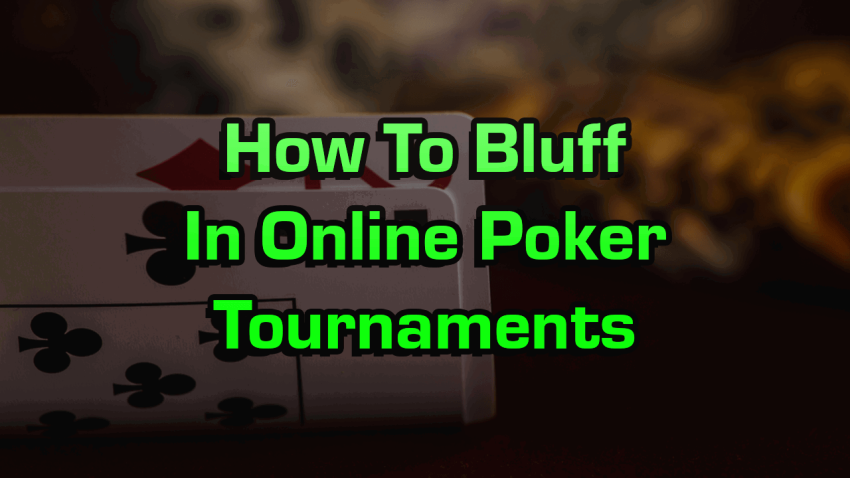Bluffing in poker tournaments is an electrifying aspect of the game that can turn the tides in your favor with just a few clever moves. Whether you’re a novice or a seasoned player, understanding effective bluffing techniques can elevate your strategy and potentially secure your victory. Successful bluffing relies not only on nerves but also on a deep comprehension of poker psychology and player behavior. Throughout this article, we will explore essential poker tournament tips, including the art of semi-bluffing in poker and how to read your opponents effectively. By mastering the intricacies of bluffing in poker tournaments, you can enhance your gameplay and keep your opponents guessing.
Gaining an edge in competitive poker settings often hinges on mastering the delicate balance of deception, particularly through the subtle art of bluffs. In tournament play, knowing when and how to execute strategic bluffs can demystify complex game dynamics and shift the momentum in your favor. By employing an array of psychological strategies and incorporating timing into your game, you can manipulate the perceptions of your opponents to improve your odds of winning. This nuanced understanding of bluffing and the various tactics involved is paramount to navigating the high-stakes world of competitive poker. Join us as we delve into the various aspects of effective bluffing strategies, psychological tricks, and practical tournament techniques that can redefine your poker experience.
The Psychology of Bluffing in Poker Tournaments
Understanding the psychology behind bluffing in poker tournaments is critical to your success. It requires not just technical skills but a deep comprehension of human behavior. Players who excel at bluffing often excel at reading their opponents; they can detect subtle cues indicating whether someone is strong or weak. This awareness allows skilled bluffer to execute their strategy more effectively. For instance, observing a player’s hesitation could signal weakness, making it an opportune moment to initiate a bluff. Additionally, you should continuously monitor how your opponents perceive you, as this impacts their expectations and decisions.
Moreover, body language plays an indispensable role in the psychology of bluffing. How you conduct yourself at the table can convey confidence or uncertainty to your opponents. If you play tightly and suddenly adopt a more aggressive posture when bluffing, it can create doubt in the minds of your opponents. This can be particularly effective when you’ve established yourself as a tight player, as they may assume you have a strong hand. The challenge, however, lies in maintaining a balanced image, ensuring you do not become predictable, which would undermine your credibility as a bluffer.
Effective Bluffing Techniques for Tournament Success
In any poker tournament, having a repertoire of effective bluffing techniques can be your ticket to success. Among these, the semi-bluff stands out as a versatile strategy, allowing players to present aggressive moves even with a weak hand that could improve on subsequent turns. This tactic not only pressures opponents but can also secure pots when they fold, or set you up for a strong hand if they decide to call. Learning how to apply a semi-bluff requires understanding when to take risks and gauging the dynamics at the table—factors that can sway the outcome significantly.
Another notable approach is the continuation bet following a pre-flop raise, regardless of your post-flop hand strength. This strategy serves to maintain the narrative of strength and can lead to opponents folding their hands, thinking you have connected well with the game. Floating is yet another tactic that should be mastered; calling a bet with the intention of bluffing later in the hand can keep aggressive opponents on their toes, often forcing them to reassess their commitments. Effectively employing these techniques relies heavily on timing and an astute awareness of your opponents’ behaviors, ultimately enhancing your effectiveness in poker tournaments.
Frequently Asked Questions
What are effective bluffing techniques in poker tournaments?
Effective bluffing techniques in poker tournaments include strategies like the semi-bluff, continuation bet, floating, bluffing on scare cards, and overbet bluffs. Each technique leverages psychology in poker to maximize your chances of success. For instance, a semi-bluff allows you to bet on hands that aren’t currently strong but can improve. Meanwhile, continuation betting can force opponents to fold weaker hands, even if you miss the flop. Understanding when and how to apply these poker strategies can significantly enhance your bluffing game during tournaments.
How does psychology play a role in bluffing in poker tournaments?
Psychology in poker is crucial for effective bluffing in tournaments. Successful bluffing involves reading your opponents’ behaviors and tells, such as betting patterns and body language. Additionally, establishing a table image can influence how opponents perceive your bets. If you’ve been playing conservatively, a well-timed bluff might go unnoticed. Conversely, if you’ve been overly aggressive, players are more likely to challenge your bluffs. Ultimately, reading the psychological cues of your opponents allows you to time your bluffs strategically, making them more convincing and effective.
| Key Aspect | Details |
|---|---|
| Psychology of Bluffing | Understanding your opponents’ tells and body language is crucial for effective bluffing. |
| Techniques | Effective strategies include semi-bluffing, continuation bets, floating, bluffing on scare cards, and overbet bluffs. |
| Timing | Choose the right moments to bluff, depending on opponents’ behavior, stack sizes, and tournament dynamics. |
| Experience | Practical experience is essential. Observing reactions and refining strategies improves bluffing. |
Summary
Bluffing in poker tournaments is an essential skill that can separate the amateurs from the experts. It involves understanding the psychology behind opponents’ decisions, employing effective techniques at the right moments, and gaining experience through practice. Every player brings their own dynamics to the table, and recognizing those nuances empowers a player to bluff successfully. By mastering bluffing in tournaments, not only do you enhance your game, but you also increase your chances of coming out on top in high-pressure situations. Engage actively with the game and keep honing your craft to become a formidable opponent at any poker table.
